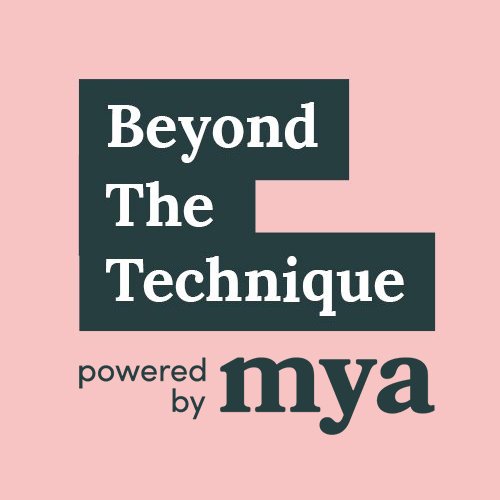You’ve heard the name, and today we want you to get to know the man behind the impressive legacy.
Frank Gambuzza is the owner of The Visage Group in Knoxville, Tennessee. The Visage Group encompasses Salon Visage, Studio Visage, Frank’s Barbershop, and Paul Mitchell The School Knoxville, which Frank and his wife Belinda recently took ownership of. Frank is the president of Intercoiffure, a group comprised of the most successful salon owners and industry professionals in North america. He employs well over 170 beauty industry professionals and serves upwards of 700 clients per day in the Knoxville area.
No wonder he’s made such a name for himself--right?! Today, we’re tearing down the curtain to reveal the man behind this incredible legacy and get the inside scoop on what’s next for one of the industry’s best, Frank Gambuzza.
How One Shoe-Shiner Turned Hairstylist by the Age of 13
To say Frank started his beauty industry career early is to say the least. Frank was doing hair by the age of 13 and actually started working in a barbershop shining shoes when he was just 10 years old.
Frank didn’t work at just any barbershop, he was shining shoes at Joe Vito Lupo’s upscale, old school shop in New Jersey where all of the cool cats came to get their razor cuts. Frank loved the barbershop atmosphere, and the tips weren’t bad either.
Of course, Frank wound up paying more attention to the hairdressers than he did the shoes he was shining, and eventually Lupo caught on, took him under his wing, and taught him how to cut hair.
The Unisex Boom and Vidal Sassoon
As Frank grew into the industry barbershops were on their way out and unisex salons were becoming the new big thing. There was one name that everyone in the industry was uttering, and that was Vidal Sassoon.
Frank was absolutely smitten with the work coming out of the Sassoon salons and decided to pool his money together and fly out to the Vidal Sasson Academy in London where he took a two week course at the new Davies Mews School, their academy for advanced work.
With the combination of training in men’s haircutting and the English hairdressing techniques Frank learned at Vidal Sassoon, Frank had every tool he needed in his toolbox to take on the “unisex boom”.
In fact, a few years later Frank marched right into Vidal Sassoon for an interview. He brought a model in with him with hair down to her waist and was instructed to give her a box bob. Frank produced an amazing cut but without a New York State cosmetology license Vidal Sassoon couldn’t take him. Frank left with an offer on the table, if he were able to acquire New York licensure, he’d have a job waiting for him at the salon.
From New Jersey to Knoxville, Tennessee
Where one door closes, another one opens, and instead of heading back to school for his New York State cosmetology license, Frank decided to head home and figure out a plan B.
There was a fellow in New Jersey doing the Vidal Sassoon thing on a much smaller scale. Vinnie Romano, the owner of The Grasshopper salon, had an unthinkable 35 hairdressers working for him. The Grasshopper was the joint in Jersey and Frank wanted in.
He applied, got the job, and slowly started working his way up to become their educational director before he decided to leave it all behind to follow a girl to Knoxville, Tennessee.
The demand for the “New York Guy” in Knoxville was actually quite asstounding, and Frank was excited about the opportunity to become a bigger fish in a smaller pond.
Celebrity Stylist Turned Salon Owner
Of course, it didn’t take long for Frank to miss that salon atmosphere, and with such a high demand he decided to open his first salon, and thus Salon Visage was born.
Frank opened his first location on a shoe-string budget with furniture and equipment that he acquired from friends and fellow salon owners who were re-doing their space down in Memphis.
With education as the backbone of his career, Frank wasn’t particularly worried about recruiting or training new talent. He hired and trained incredibly talented staff, quickly filled his books and eventually they outgrew their space and their overall vibe.
In fact, it was Frank’s wife, Belinda, one of his stylists, that suggested the change of scenery. She knew that if Salon Visage was going to take over the town, they needed to be in a space that emulated the level of work their stylists were producing and well--the rest is history.
What’s Next For Frank?
While Frank is incredibly grateful for all of the opportunities he’s been given throughout his career thus far, he doesn’t think of himself as somebody in “success mode” because he’d rather be in “sustainability mode.” The industry is changing, and Frank refuses to be reactive to all of the twists and turns heading our way.
Instead, Frank and The Visage Group strive to be proactive, and for Frank that means getting back to the basics. With the major shift in the beauty industry being that the Amazon’s of the world have taken over salon retail and big business is booming, Frank believes it’s time to think small again.
Frank is committed to keeping it simple by becoming more loving, more accepting, less judgemental and incredibly grateful for all of his employees, partners, friends and family, because a happy staff leads to happy clients. It’s all about surviving within, and shining throughout.
Want to learn more about the ever-so-inspirational Frank Gambuzza? Listen to the podcast that inspired this blog, episode 193. And speaking of Intercoiffure, will we be seeing you there? Shoot us an email at info@beyondthetechnique.com to let us know that you’ll be there!




